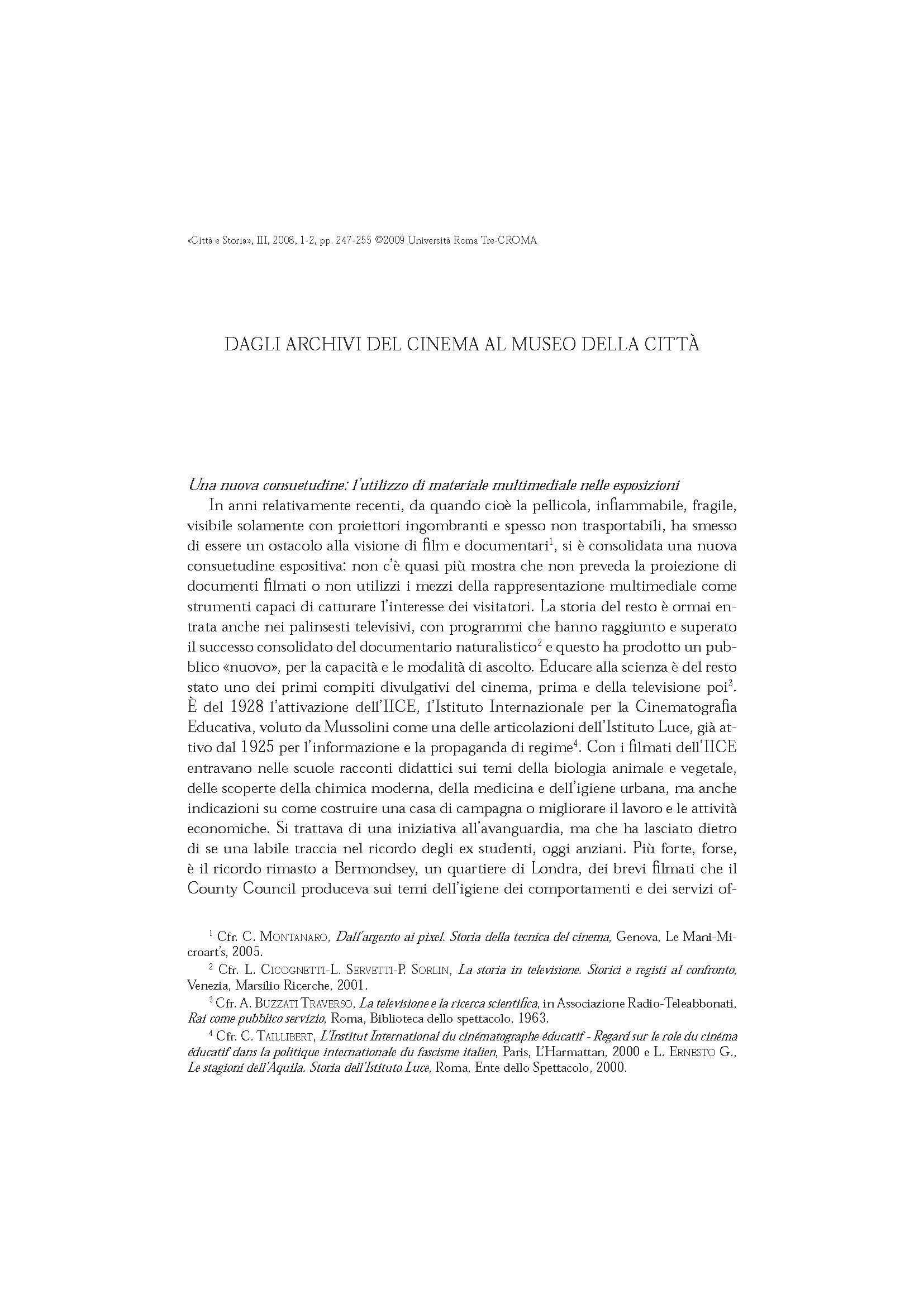Dagli archivi del cinema al museo della città
6,00 €
In the last years, fragments of films and news-reels have been largely used in exhibitions concerning architecture and urban planning. This happened also because television has broken a popular hang-up against film records in their capacity of telling history.
Moreover, technology makes film records much more accessible whereas, in the past, they were traditionally difficult to hand and to reproduce. Recently, we had the chance to show how Venice has been depicted by documentary film during the last century and that can be taken as a useful example for the activity of a city museum. Each film record provides us with a precise and different interpretation of the same subject. They were all documents fitting to communicate plans and projects for the present as well as for the future of Venice. Such a sequence of filmed documents has been stored in a DVD disk attached to a book. They have been therefore offered, in their integrity, to the curiosity of a large public, in order to show some past projects to people interested in present projects.
Generally speaking, filmed archives conserve a number of stories about cities and places. They are to be interpreted as stories about projects and their ideas of representation. What a city museum needs is an expert who can manage the existing film archives and offer possible interpretations for the new visitors.
In the last years, fragments of films and news-reels have been largely used in exhibitions concerning architecture and urban planning. This happened also because television has broken a popular hang-up against film records in their capacity of telling history.
Moreover, technology makes film records much more accessible whereas, in the past, they were traditionally difficult to hand and to reproduce. Recently, we had the chance to show how Venice has been depicted by documentary film during the last century and that can be taken as a useful example for the activity of a city museum. Each film record provides us with a precise and different interpretation of the same subject. They were all documents fitting to communicate plans and projects for the present as well as for the future of Venice. Such a sequence of filmed documents has been stored in a DVD disk attached to a book. They have been therefore offered, in their integrity, to the curiosity of a large public, in order to show some past projects to people interested in present projects.
Generally speaking, filmed archives conserve a number of stories about cities and places. They are to be interpreted as stories about projects and their ideas of representation. What a city museum needs is an expert who can manage the existing film archives and offer possible interpretations for the new visitors.

